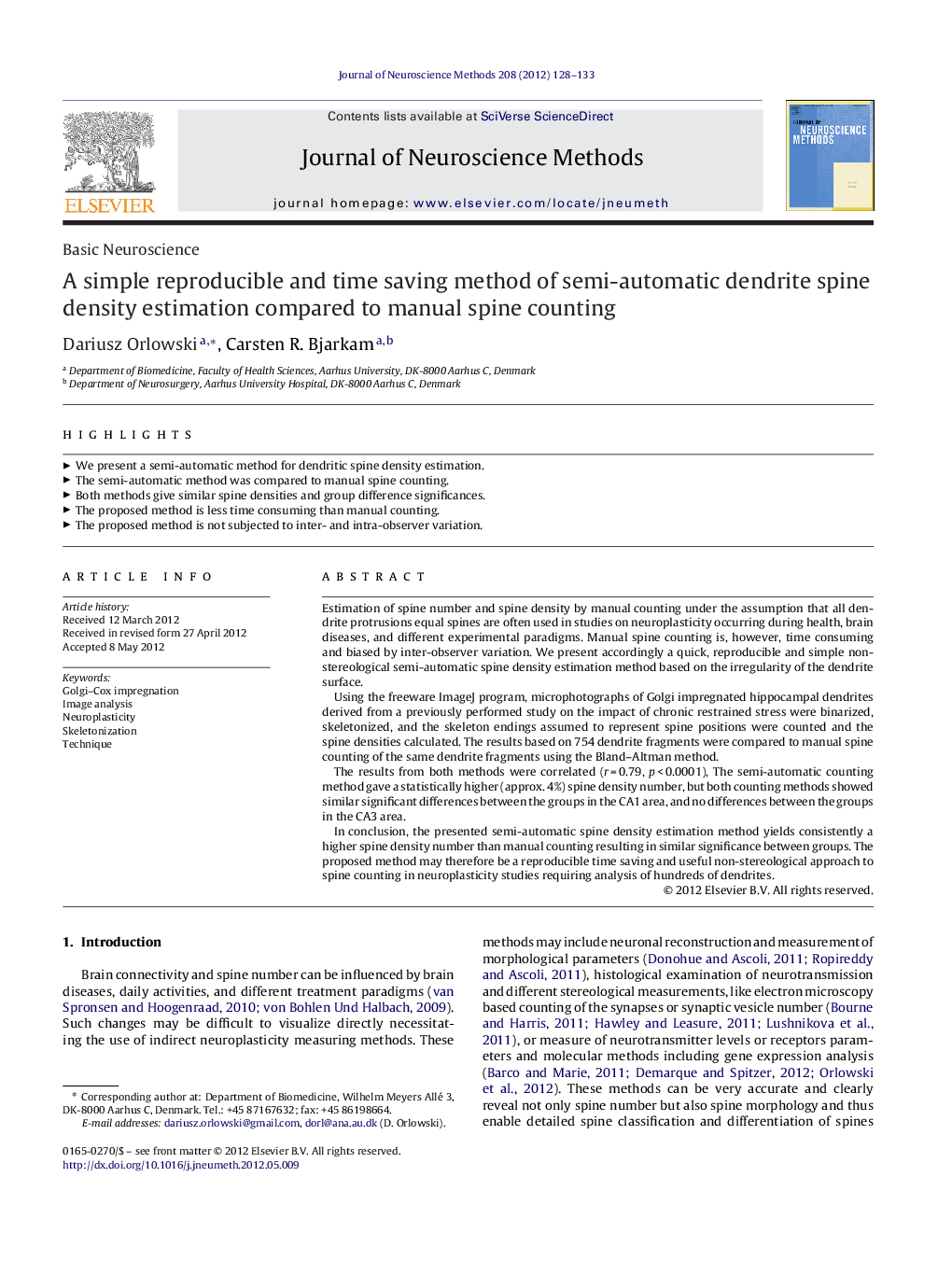| Article ID | Journal | Published Year | Pages | File Type |
|---|---|---|---|---|
| 6269273 | Journal of Neuroscience Methods | 2012 | 6 Pages |
Estimation of spine number and spine density by manual counting under the assumption that all dendrite protrusions equal spines are often used in studies on neuroplasticity occurring during health, brain diseases, and different experimental paradigms. Manual spine counting is, however, time consuming and biased by inter-observer variation. We present accordingly a quick, reproducible and simple non-stereological semi-automatic spine density estimation method based on the irregularity of the dendrite surface.Using the freeware ImageJ program, microphotographs of Golgi impregnated hippocampal dendrites derived from a previously performed study on the impact of chronic restrained stress were binarized, skeletonized, and the skeleton endings assumed to represent spine positions were counted and the spine densities calculated. The results based on 754 dendrite fragments were compared to manual spine counting of the same dendrite fragments using the Bland-Altman method.The results from both methods were correlated (r = 0.79, p < 0.0001), The semi-automatic counting method gave a statistically higher (approx. 4%) spine density number, but both counting methods showed similar significant differences between the groups in the CA1 area, and no differences between the groups in the CA3 area.In conclusion, the presented semi-automatic spine density estimation method yields consistently a higher spine density number than manual counting resulting in similar significance between groups. The proposed method may therefore be a reproducible time saving and useful non-stereological approach to spine counting in neuroplasticity studies requiring analysis of hundreds of dendrites.
⺠We present a semi-automatic method for dendritic spine density estimation. ⺠The semi-automatic method was compared to manual spine counting. ⺠Both methods give similar spine densities and group difference significances. ⺠The proposed method is less time consuming than manual counting. ⺠The proposed method is not subjected to inter- and intra-observer variation.
